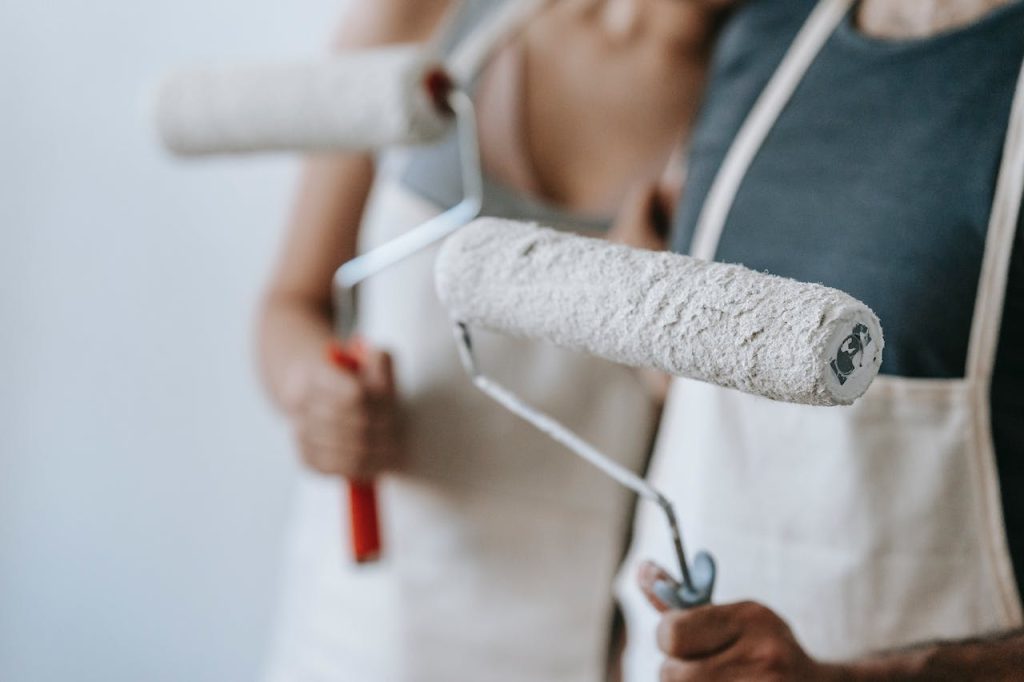Painting your home can be a refreshing way to transform your living space, but it’s not without its hidden pitfalls. A well-executed paint job can enhance your home’s aesthetic appeal and increase its value, while mistakes can lead to unanticipated costs and dissatisfaction. Knowing these common errors can save time, money, and the heartache of a botched home improvement project. Keep reading to discover how to sidestep these possible mishaps.
Mastering Painting Techniques for a Flawless Finish
Even with the best paint, a poor application method can lead to a disappointing finish. It’s crucial to master basic painting techniques like maintaining a wet edge to avoid lap marks and knowing how to properly load the brush or roller with paint to prevent drips. Consistency in your painting strokes will contribute to a uniform appearance.
For a professional-looking outcome, one should avoid painting in extreme temperatures or high humidity, as these conditions can affect the way paint dries and adheres to the surface. Patience is key; allow sufficient time for each coat to dry before applying the next to avoid tackiness or visible brush strokes.
Painting corners and edges requires a delicate touch and attention to detail. A recommended practice is to cut in with a brush first, creating clean lines around the room’s perimeter and then filling in the major wall spaces with a roller. Alternating between the brush and roller without letting the edges dry ensures a seamless blend.
Well-trained professionals know how to avoid common pitfalls like roller marks or overspray. Hiring experts for a guaranteed smooth finish is worth considering, especially for significant projects or high-visibility rooms. You can search for “painting company Boise” to find a painter near you.
Choosing the Right Paint for Different Surfaces
One of the cornerstones of a successful painting project is selecting the appropriate type of paint for the surface you’re covering. The use of the wrong paint can lead to peeling, bubbling, or even an unattractive finish that doesn’t last. Consider factors like moisture, surface material, and the area’s usage before choosing between oil-based and water-based options or specialized paints for bathrooms and kitchens.
It’s also important to choose the right finish for your project. Matte, eggshell, satin, semi-gloss, and high-gloss finishes each perform best in specific settings. For instance, glossier finishes are more durable and clean, making them suitable for high-traffic areas or rooms prone to moisture. Taking a moment to research or consult with a professional can prevent costly mistakes.
Understanding paint compositions and their intended applications can greatly influence the longevity and appearance of your paint job. For example, using latex paint on wood can cause the material to rot if not properly sealed. Each type of paint contains different properties that make it appropriate for certain applications but not others.
Prepping Walls and Surfaces Before Painting
Skipping surface preparation is a classic blunder in painting. Clean, smooth, and debris-free walls are essential for a uniform coating. This means washing walls to remove grease and dirt and then filling in any dings or holes with spackle before sanding the surface smooth. Primer is not to be overlooked, as it helps provide a good foundation for the paint to adhere to and enhances paint durability.
Masking off areas not to be painted, like trim, windowsills, and doorframes, is also an integral step. Use quality painter’s tape to achieve sharp edges and protect surfaces from accidental strokes. This attention to detail will shine through in the professional appearance of the finished product.
Remember that larger cracks or damages might require more than just a simple spackle fix. In such cases, renovation work may be needed before the actual painting begins. Ignoring these problems can result in wasted effort and resources when the underlying issues eventually ruin your fresh coat of paint.
A successful home painting project relies on careful preparation, accurate calculations, proper techniques, and optimal timing. Ultimately, painting your home should be an enjoyable and rewarding experience that enhances your living space for years to come.



